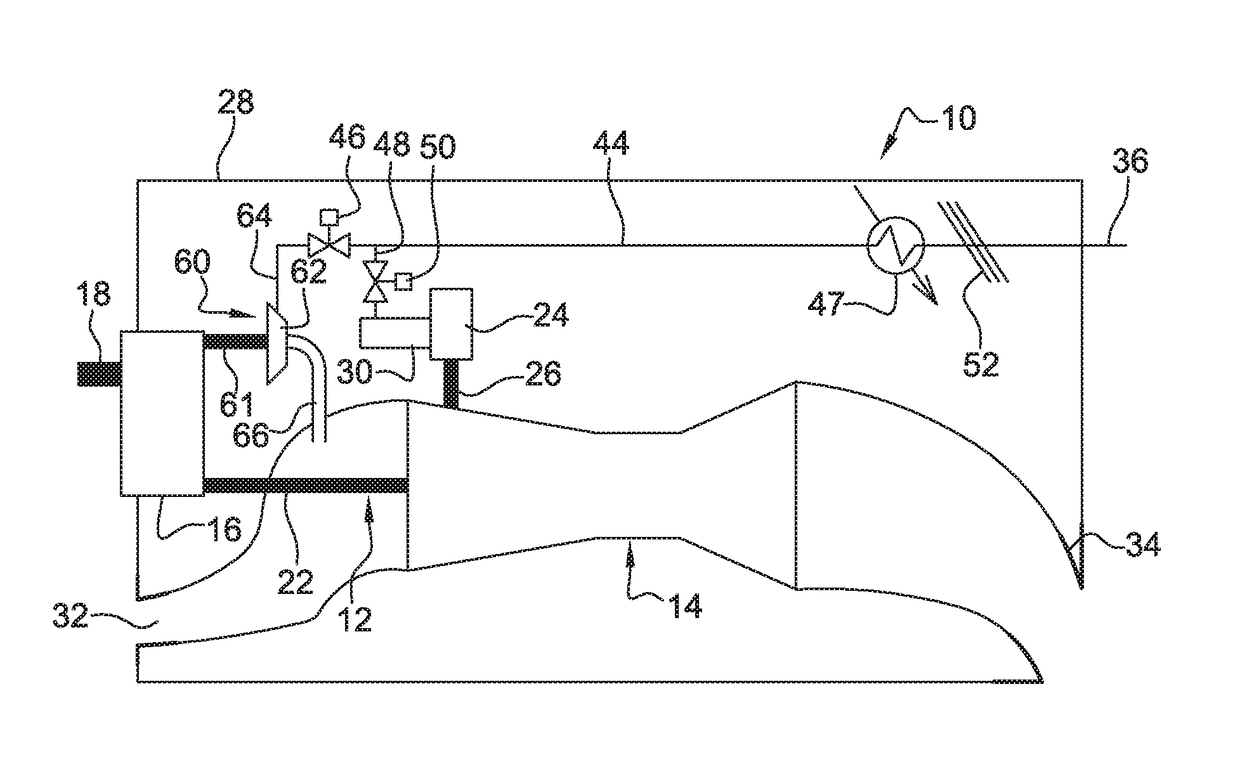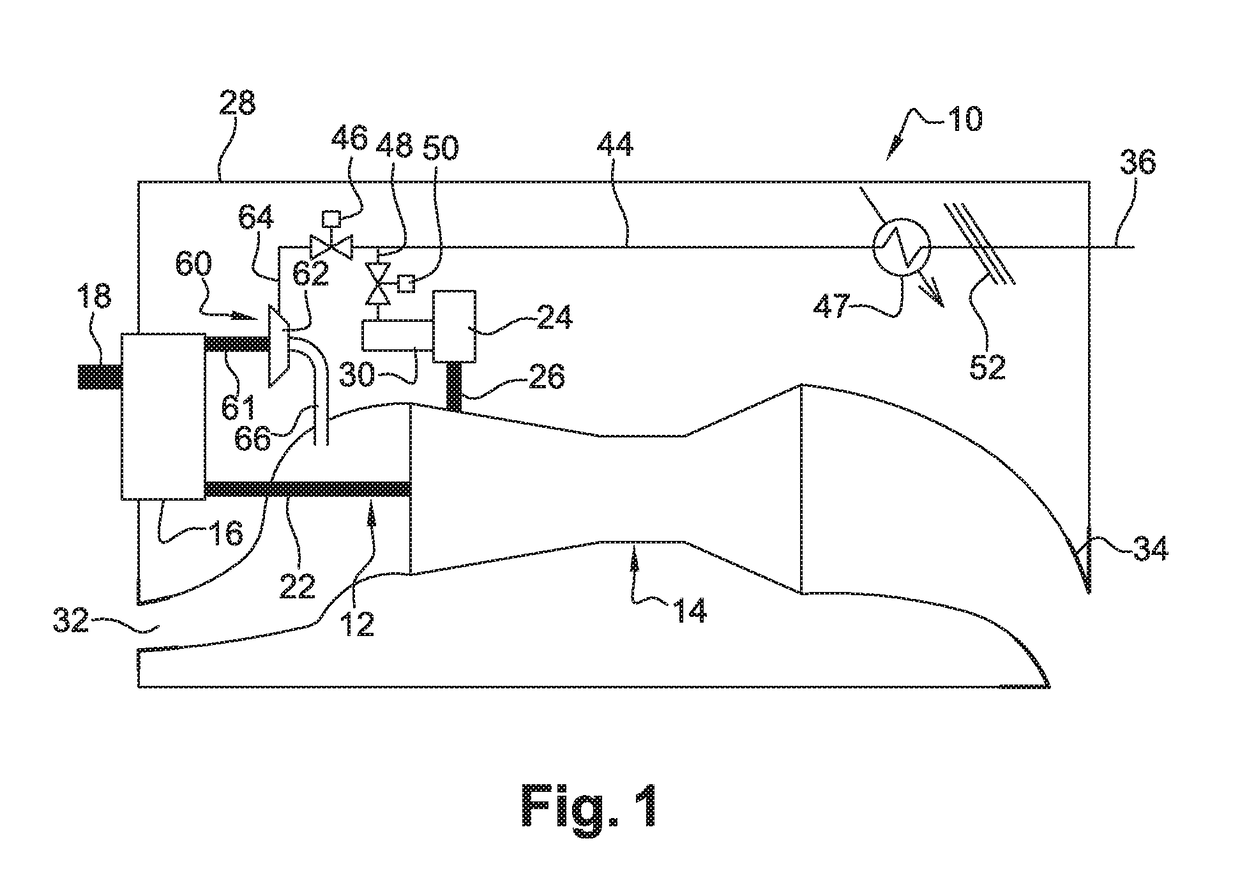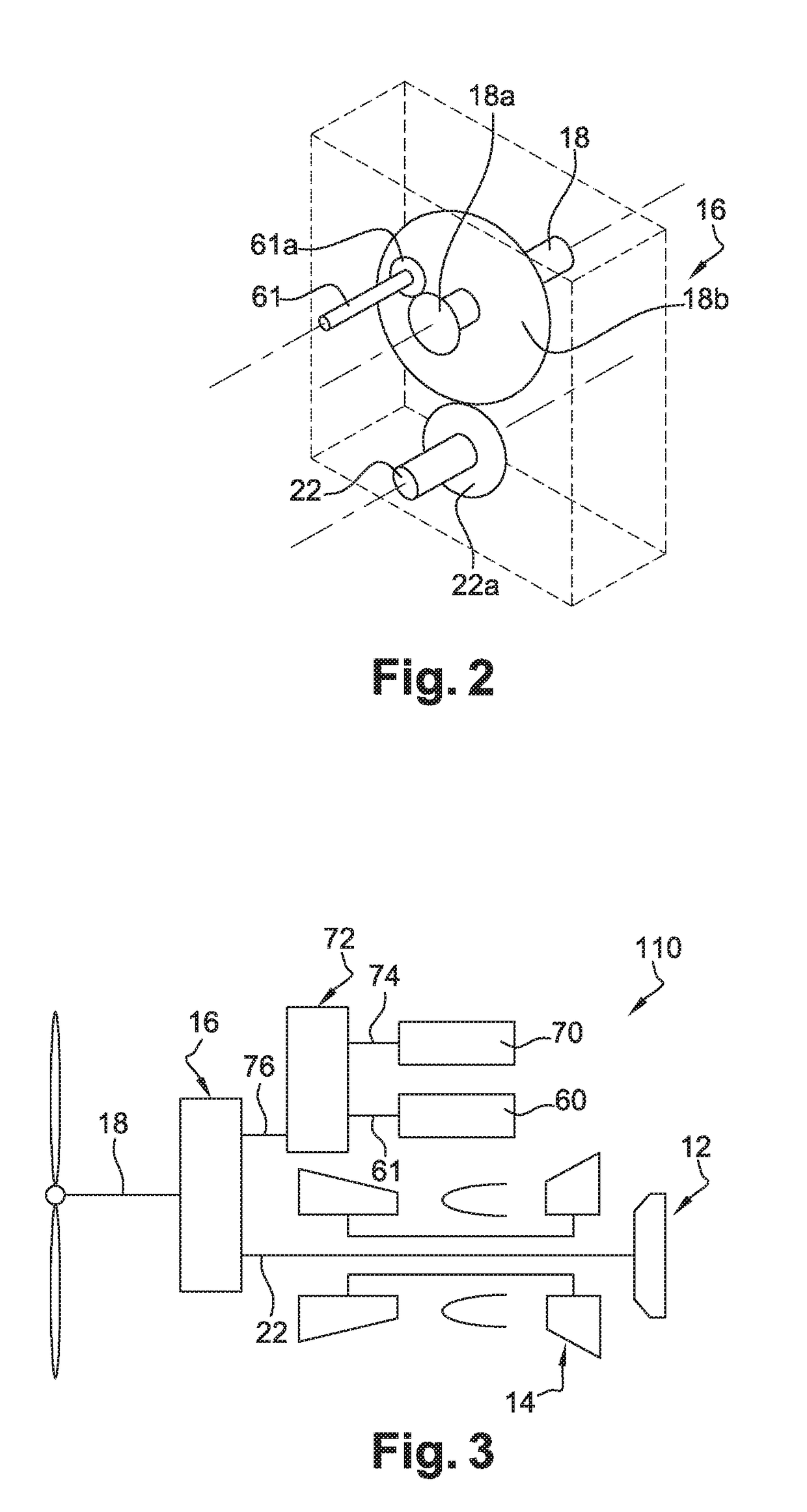Supply of air to an air-conditioning circuit of an aircraft cabin
a technology for air conditioning circuits and aircraft, which is applied in the direction of machines/engines, energy-saving board measures, and efficient propulsion technologies, etc. it can solve the problems of overconsumption of fuel at idle power, noise, and significant oversupply of air supplied to aircraft, and achieve significant and uncontrolled fuel consumption and limit the effect of bleed air flow
- Summary
- Abstract
- Description
- Claims
- Application Information
AI Technical Summary
Benefits of technology
Problems solved by technology
Method used
Image
Examples
Embodiment Construction
[0043]FIG. 1 shows an aircraft turboprop engine 10, which herein is of the twin-spool type and comprises a low-pressure body 12 and a high-pressure body 14. The low-pressure body 12 drives a thrust propeller by means of a gearbox 16 or reduction gearbox, commonly referred to as PGB (Power Gear Box). Only the shaft 18 of the thrust propeller is shown in FIG. 1.
[0044]The low-pressure body 12 herein comprises only a turbine rotor connected by a shaft to the gearbox 16. The high-pressure body 14 comprises a compressor rotor connected by a shaft to a turbine rotor. The shaft of the high-pressure body 14, referred to as HP shaft, is tubular, and the shaft of the low-pressure body 12, referred to as LP shaft or power shaft, passes coaxially through said HP shaft. The LP shaft comprises a gear (not shown) at one end that is coupled to the shaft 18 of the thrust propeller by means of a series of gears of the gearbox 16.
[0045]The turboprop engine 10 comprises a gearbox 24 (referred to as AGB ...
PUM
 Login to View More
Login to View More Abstract
Description
Claims
Application Information
 Login to View More
Login to View More - R&D
- Intellectual Property
- Life Sciences
- Materials
- Tech Scout
- Unparalleled Data Quality
- Higher Quality Content
- 60% Fewer Hallucinations
Browse by: Latest US Patents, China's latest patents, Technical Efficacy Thesaurus, Application Domain, Technology Topic, Popular Technical Reports.
© 2025 PatSnap. All rights reserved.Legal|Privacy policy|Modern Slavery Act Transparency Statement|Sitemap|About US| Contact US: help@patsnap.com



